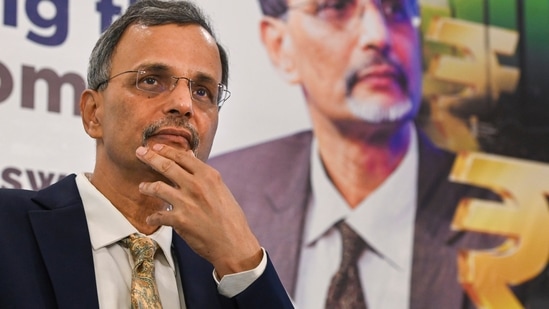The Indian economy might grow faster than estimated in the economic survey earlier this year, so much so that the GDP would cross the $4-trillion mark, Chief Economic Adviser V. Anantha Nageswaran said on Friday.
“The first half of the financial year has recorded a real GDP growth rate of 8%. Now we can state comfortably that the full year growth will be either 7% or to the north of that, rather than to the south of that,” Nageswaran told reporters during a press conference after the release of the Q2 GDP data. “We are now saying that the GDP growth rate will be at least 7% for the full year.”
At that rate, India’s gross domestic product—a measure of the size of the economy—would cross the $4-trillion mark, he said.
“The confluence of stable inflation, sustained public capex and the reforms momentum positions the economy to navigate risks, as reflected in upward revisions to FY26 GDP growth projections by various agencies.”
The Indian economy grew at the fastest pace in six quarters in July-September 2025, underscoring the resilience of the world’s fourth largest economy in the face of steep US tariffs that came into effect on 23 August.
India’s GDP growth rate stood at 8.2% in Q2 FY26 as against 7.8% in Q1 FY26 and 5.4% in the year-ago period, according to data released by the National Statistical Office on Friday. Economists polled by Reuters had estimated the GDP print at 7.3%, while an SBI Research report pegged the figure at 7.5%. Bloomberg had an estimate of 7.4%.
The Economic Survey 2024-25 had projected India’s GDP growth rate at 6.3-6.8% in FY26. The size of the economy was $3.9 trillion in FY25.
India’s GDP growth rate in FY26
According to Nageswaran, the third quarter of the ongoing fiscal (October to December 2025) has started on a strong footing, as GST 2.0 boosted spending during the festive season. That trend is likely to sustain until the end of fiscal due to the following factors:
- Improving price dynamics and tax reforms are expected to boost household disposable incomes, strengthening the near-term consumption outlook.
- That GST collections grew at 9% year-on-year in April-October 2025 shows that the underlying revenue stream has remained resilient.
- A healthy corporate sector—by way of higher earnings—augurs well for sustained private investments in H2 FY26.
- The monthly tractor sales at an eleven-year high and two- and three-wheeler sales at a record indicate that consumption is broad-based.
- The rural demand is resilient and growing—on the back of favourable agricultural outcomes and healthy monsoon.
- The urban demand has gained traction after GST rate cuts.
Reforms in the Indian economy
Before India’s Q2 GDP growth rate rose to the highest in six quarter, the retail inflation rate fell to the lowest ever and trade deficit widened the most on record in October.
But core inflation remains stable, Nageswaran said, and the timely Rabi sowing and healthy reservoir levels reinforce a benign food supply outlook.
Ongoing structural reforms—including the implementation of India’s Labour Codes, GST rationalisation, and the new income tax regime—continue to enhance efficiency and competitiveness, he said.
